
Politics
17:52, 08-Sep-2017
China Footprint: From expressways to high-speed railways
By Lindy Mtongana
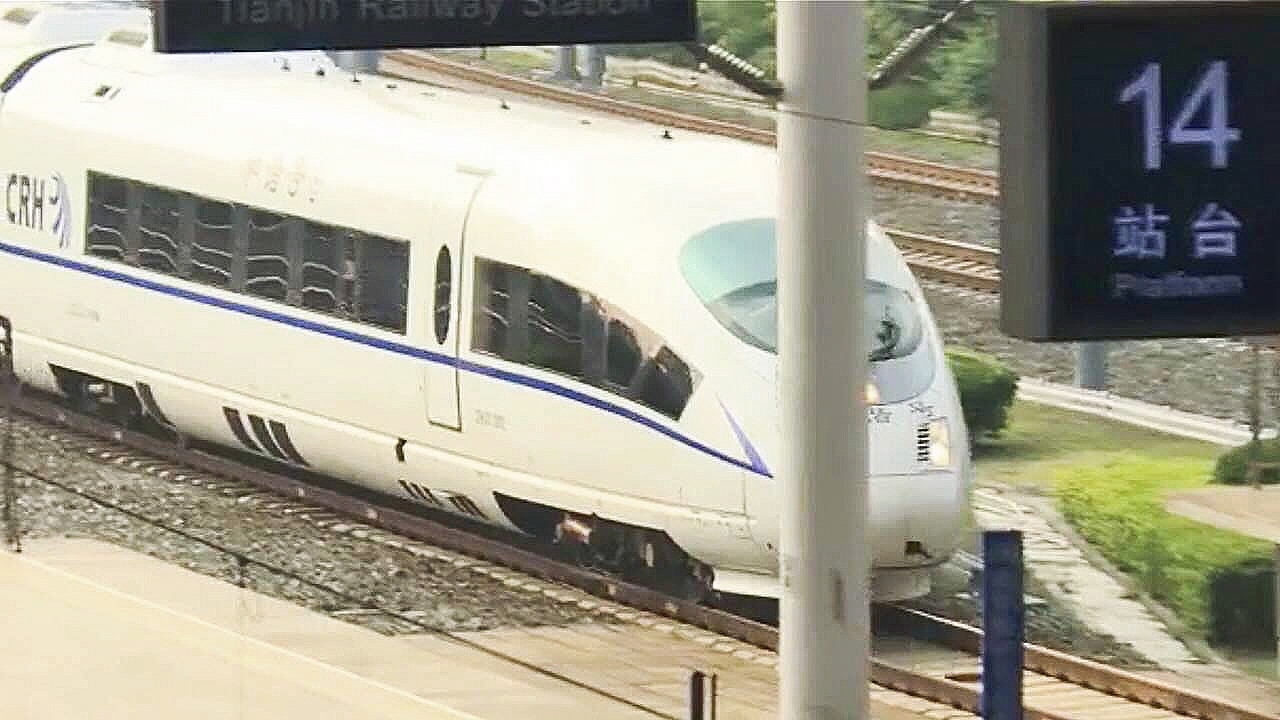
There's an old Chinese saying: "If you want to be rich, build roads first," and, even in the modern era, this saying rings true. China has been making persistent efforts in infrastructure construction since starting its reform and opening up process in 1978. In transport, for example, China has invested heavily in developing modern expressways and high-speed railways.
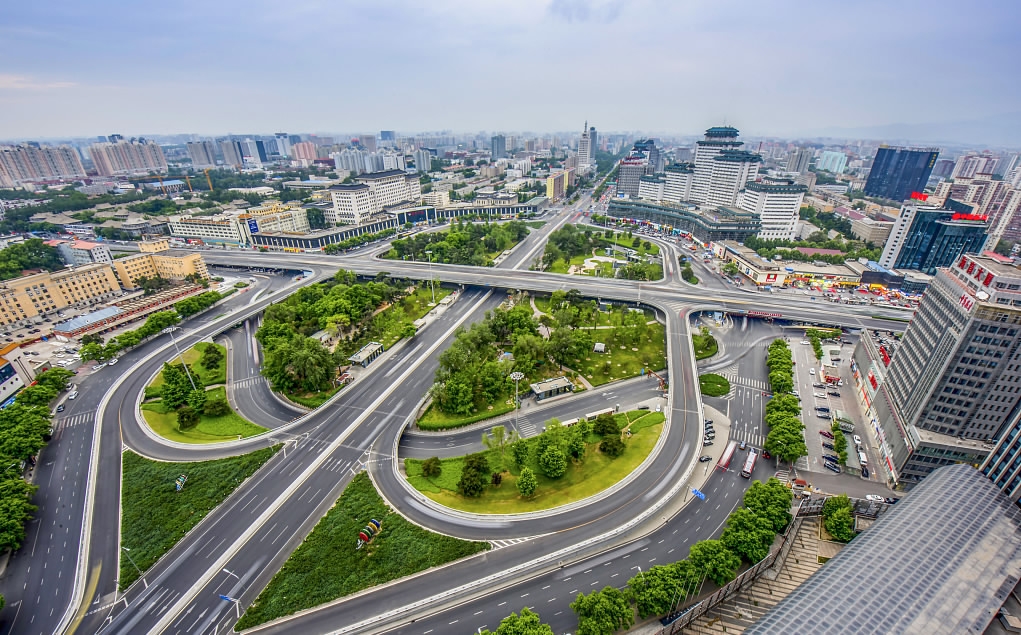
China’s expressways /VCG Photo
China’s expressways /VCG Photo
Several decades later, China has been completely transformed by the development of modern expressways and world-class high-speed railways.
By the end of 2016, China had a total 4.7 million km of road in use and an expressway distance of 130,000 kilometers, making it the world’s biggest road network.
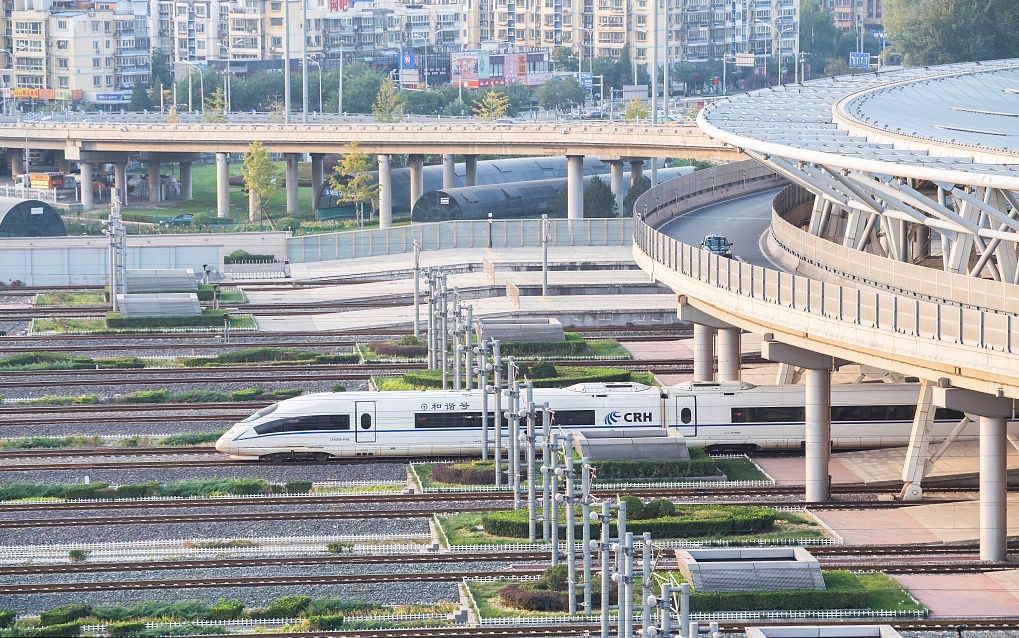
High-Speed railway in Beijing South Station /VCG Photo
High-Speed railway in Beijing South Station /VCG Photo
There’s also a total 22,000km of high-speed railways in use, ranking number one globally. The development of China’s roads not only has contributed to rapid economic growth, but also changed the way people travel across the country.
Here’s a story about the China’s high-speed railways: The port city of Tianjin lies 130km south-east of China’s capital Beijing, and in the past decades, the distance to Beijing was a challenge for both industries and individuals, like Qi Hehe, who’s a train commuter living in Tianjin and working in Beijing.

Tianjin Station /VCG Photo
Tianjin Station /VCG Photo
All that has changed since the 2008 launch of the high-speed railway connecting Tianjin and Beijing. For commuters like Qi, the 130km distance and hours spent in traffic are a thing of the past. Qi said that she has been taking this train from Tianjin to Beijing for the last 2 years, and has really gotten used to this lifestyle. It takes roughly 30 minutes on the route, meaning she can easily get to work on time every morning.
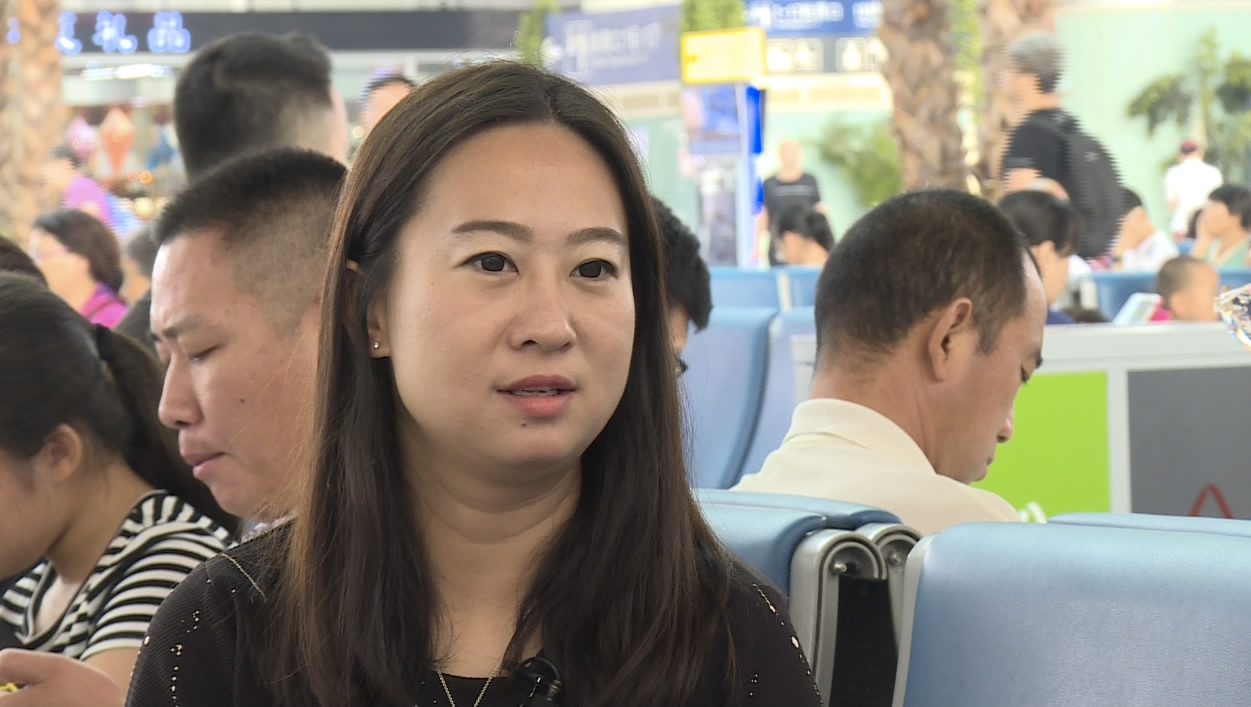
Qi Hehe waiting in the Tianjin station /CGTN Photo
Qi Hehe waiting in the Tianjin station /CGTN Photo
Gao Xiaodong, a member of staff at the Tianjin Station, said this is one of the most popular daily routes and the phenomenon of intercity commuters like Qi is becoming more and more universal. The Tianjin-Beijing high speed railway conductor Zhang Ying said that the train carries around 80,000 passengers per day, over weekends and holidays it increases to 100,000, and over the Golden Week holiday, the number rises to 120,000.
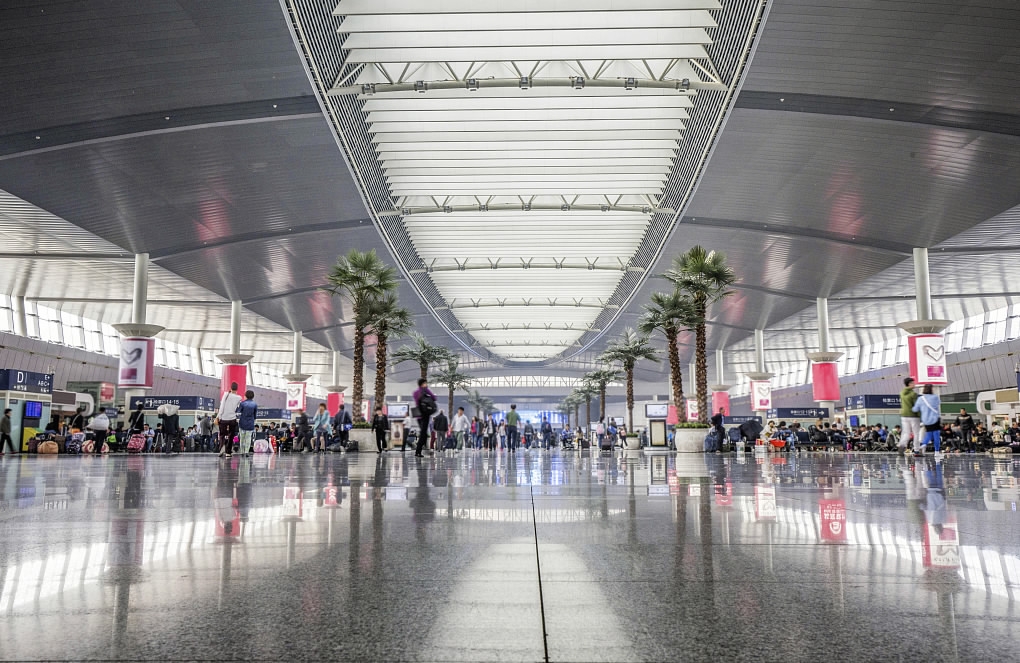
Tianjin Station’s waiting room /CGTN Photo
Tianjin Station’s waiting room /CGTN Photo
The Director-General of Science Technique & Law department at the National Railway Administration, Yan Hexiang, said that the Beijing-Tianjin High-Speed Railway effectively merges the two cities, providing convenient conditions for commerce and trade between the two cities.
The high speed railway is becoming more and more important to national economic and social development. Since it was launched in 2008, the overall passenger transport volume of China’s railways has increased by 10% annually, reaching 2.8 billion passengers in 2016.
Railway construction has gained the support of the Belt and Road Initiative, which was launched 4 years ago, and has now become an important part of the program. A number of railways with Chinese technical standards have achieved great results: the Ethiopia-Djibouti railway project was completed and began operations last October and the Mombasa-Nairobi Railway project was delivered and has ran since this May.
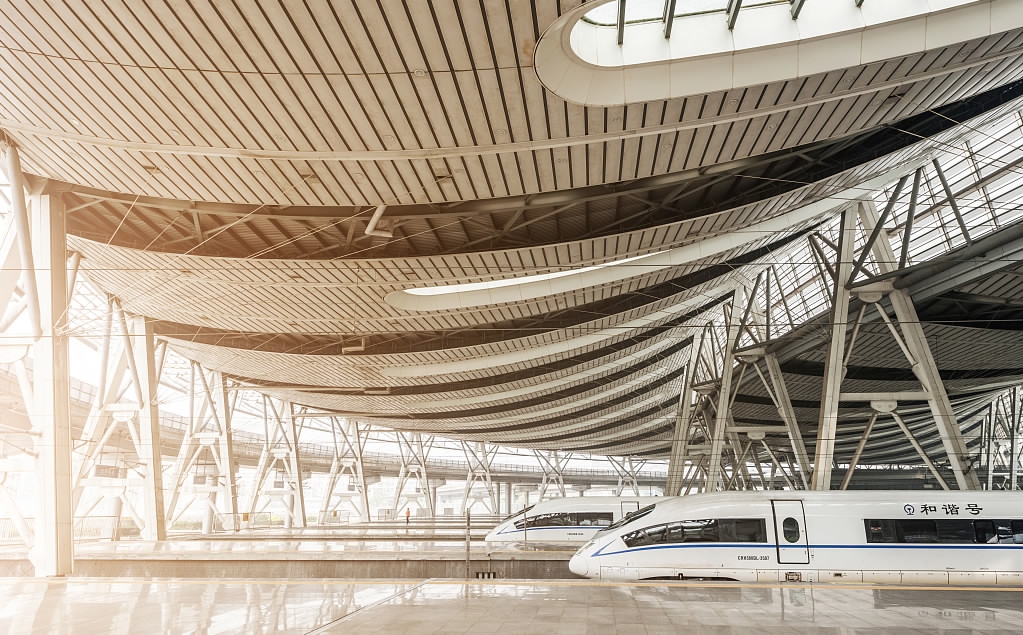
Beijing South Station interior /VCG Photo
Beijing South Station interior /VCG Photo
Projects like the Jakarta-Bandung Railway in Indonesia, the eastern coastal railway in Malaysia, and the Kunming-Vientiane railway are also under construction..
Yan also said that since the China Railway High-Speed (CRH) has been in used, its cumulative operation is 4000km of tracks, covering 11 countries and 29 cities in Europe, making CRH an international brand with a high reputation.
The CRH has created new opportunities for international trade, two-way investment activities, and people exchanges in the countries along the path of the railway.
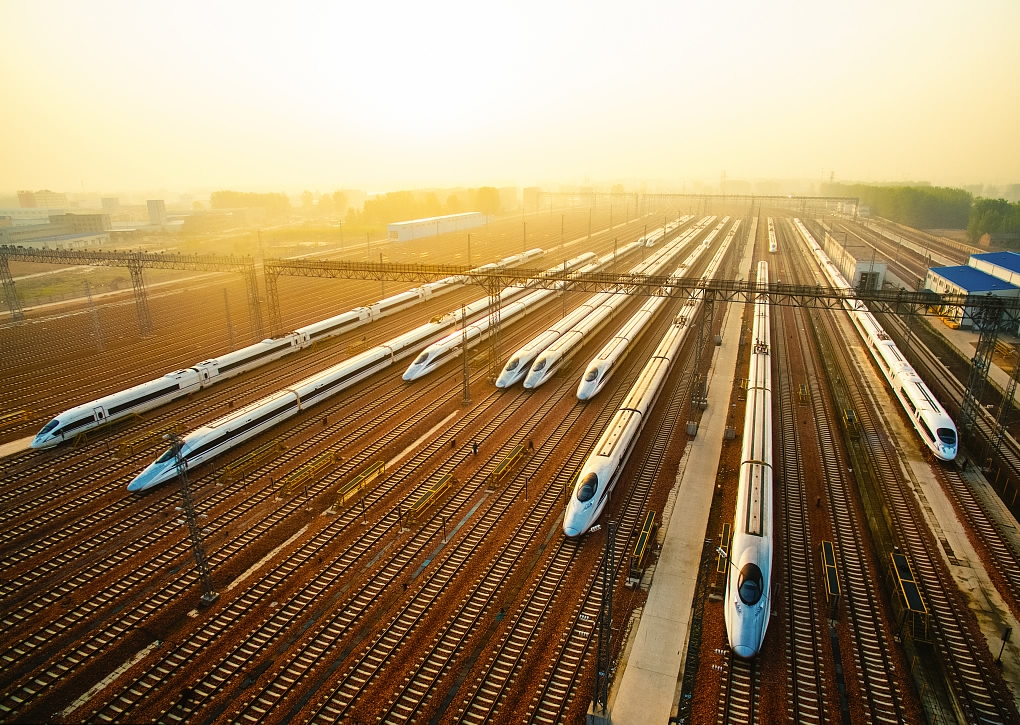
Running CRH /VCG Photo
Running CRH /VCG Photo
CRH is also a part of the China’s road network. According to Wu Dejin, the Director-General of China Highway Bureau, by the end of 2016, China already had a total of 4.7 million kilometers of road in use, making it the world’s biggest road network.
Wu said the expressway construction has also promoted development of the regional economy. It has improved the investment environment in rural areas, and brought huge opportunities to the land development and adjacent industries in these areas. It has also promoted the formation of economic industry belt between these areas and the prosperous regions of China.

Expressways in China /VCG Photo
Expressways in China /VCG Photo
Road construction has increased domestic demand, leading to the development of related industries such as construction, petrochemicals, machinery, automobiles, transportation, tourism and the real estate business.
In recent years, the number of people working in road construction has remained at around 2.8 million per year - but at the peak of a construction boom, it can reach roughly 4 million people, boosting employment and easing traffic congestion.
Meanwhile, the construction on rural roads has improved transportation conditions and the development of agriculture in poor areas, which quickening the pace of alleviating poverty nationwide.

Expressways in China’s remote areas /VCG Photo
Expressways in China’s remote areas /VCG Photo
Wu expressed that, nowadays, most of China’s expressways are built with a mixture of government funding, bank loans and other sources of financing, with most becoming toll roads. This toll policy has broadened financing options for expressway construction, forming a diversified investment and financing model that includes national investment, local fundraising, social financing and foreign capital.
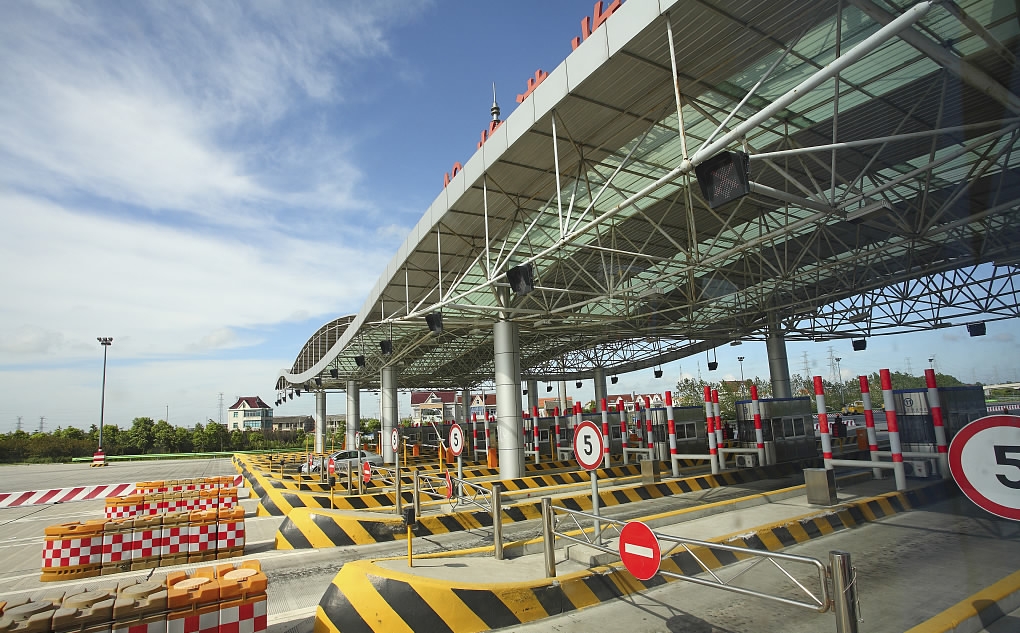
Toll Station in China /VCG Photo
Toll Station in China /VCG Photo
For the next step, the government will gradually improve the expressways toll policy system, ensuring that in every phase the goals of a green, smart and safe road traffic system are met.
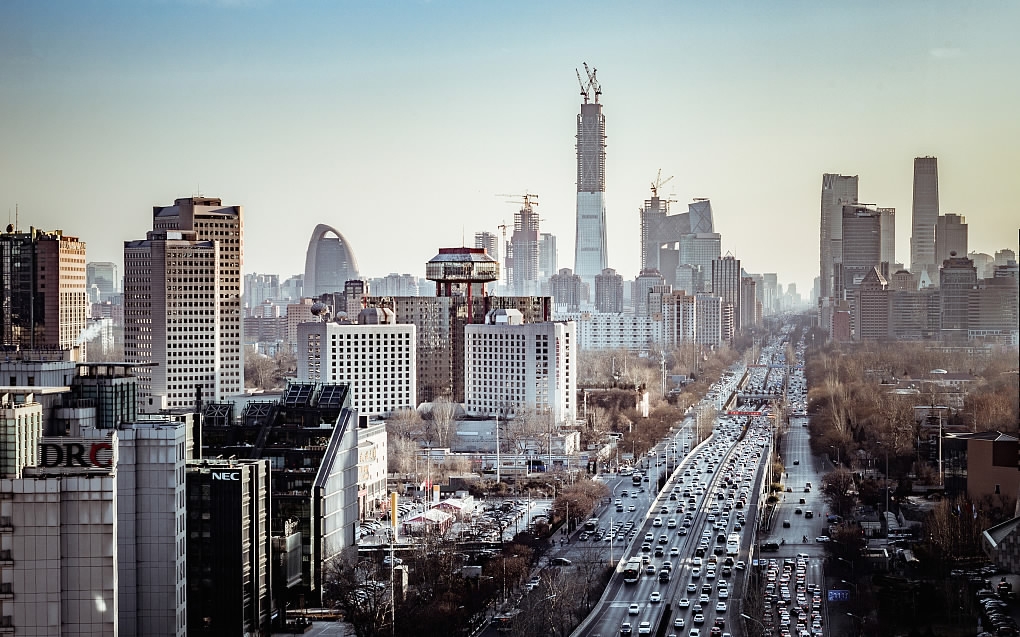
Roads in Beijing /VCG Photo
Roads in Beijing /VCG Photo
Using road and rail to expand the economy and improve people’s lives is a strategy that has worked for China. And because of this, even more roads are planned for the country’s future.
China Footprint (CGTN's special series):

SITEMAP
Copyright © 2018 CGTN. Beijing ICP prepared NO.16065310-3
Copyright © 2018 CGTN. Beijing ICP prepared NO.16065310-3